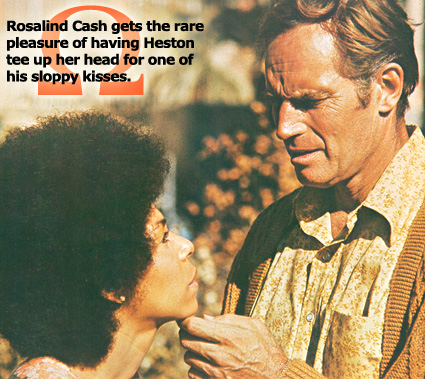|
By Mark Gallagher
Atlanta Five-O
Is Charlton Heston God? That's for government experts to
decide, but there can be no doubt he is the Chosen One, personally
selected by the Almighty - meaning of course Cecil B. DeMille.
Mr. DeMille (1881-1959) was the cinema ultra-man who launched
the Heston star-vehicle by casting him as Brad the circus
boss in 1952's Best Picture-winner, "The Greatest Show
on 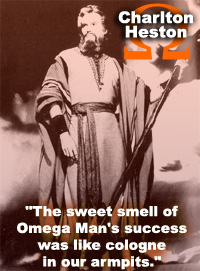 Earth."
Not bad for starters, but the master producer/ director envisioned
his new protégé in a more ambitious role, especially
for a 30 year-old from the north Michigan woods. DeMille was
talking about Mr. Pentateuch himself, Old Moses, Moses the
Prophet, Moses the Lawgiver, Moses the man who said: "Now
kill every male dependent, and kill every woman who has had
intercourse with a man, but spare for yourselves every woman
among them who has not had intercourse." And things like
that. Earth."
Not bad for starters, but the master producer/ director envisioned
his new protégé in a more ambitious role, especially
for a 30 year-old from the north Michigan woods. DeMille was
talking about Mr. Pentateuch himself, Old Moses, Moses the
Prophet, Moses the Lawgiver, Moses the man who said: "Now
kill every male dependent, and kill every woman who has had
intercourse with a man, but spare for yourselves every woman
among them who has not had intercourse." And things like
that.
A stroke of genius, as it turned out, because "The Ten
Commandments" (1956) gave America exactly what she required:
an Old Testament full of heroes who looked like youthful Hollywood
movie stars, and indisputable visual confirmation, via photo
optical effects, of the existence of God the Father.
And so, after a prelude of TV Shakespeare and a couple mediocre
movies, a young actor flashed to world fame as the High Priest
of the Atomic Orthodoxy in the greatest, most righteous movie
spectacle of the century. For Heston the lesson was simple.
As long as he was at the center of Hollywood, History, Religion
and Western Civilization, everything was aces.
Then came the cold winds of change. The fifteen year disconnect
between 1956 and 1971 was an abyss more dire than Snake River
Canyon. The time-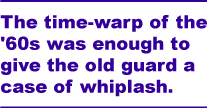 warp
of the '60s was enough to give the old guard a serious case
of whiplash. Nostalgia for the imperial glory days of the
'50s ran high, yet a guy like Heston was at the same time
eager to show he was plenty "with it" enough to
make the scene in these free-wheeling new times of rebellion
and unfettered sexuality. warp
of the '60s was enough to give the old guard a serious case
of whiplash. Nostalgia for the imperial glory days of the
'50s ran high, yet a guy like Heston was at the same time
eager to show he was plenty "with it" enough to
make the scene in these free-wheeling new times of rebellion
and unfettered sexuality.
That's where "The Omega Man" comes in, a shabby
but contagiously playable B-rate sci-fi passion play set in
a futuristic "1975" Los Angeles defumigated by the
Apocalypse. All you have to do is imagine Moses fast-forwards
past the New Testament and crash-lands in the Book of Revelation
as illustrated by the staff of EC Comics.
The first thing to keep in mind is that in 1970, Heston staggered
into the final frames of "Beneath the Planet of the Apes"
to detonate the Mutant Doomsday Device. Narrator Paul Frees
(well known for his voicing of Boris Badenov on "Rocky
& Bullwinkle") assured us, in closing, that this
big 20th Century Fox finish extinguished all life, man or ape,
from the planet permanently.
So maybe it's telling that it was Charlton Heston himself
who dreamed up 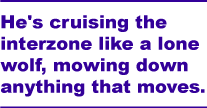 the
now-classic "Heston nukes the world" gag. With his usual appetite
for over-doing things, Mr. DeMille's Technicolor prophet had
metastasized into the ultimate suicide bomber. So how does
a leading ham of middle age with a penchant for apocalyptic
over-kill follow up a stunt like that one? the
now-classic "Heston nukes the world" gag. With his usual appetite
for over-doing things, Mr. DeMille's Technicolor prophet had
metastasized into the ultimate suicide bomber. So how does
a leading ham of middle age with a penchant for apocalyptic
over-kill follow up a stunt like that one?
How about this: with no explanation, we get Moses Ben-Hur
Taylor piloting a red Ford convertible through the eerily
empty streets of downtown Los Angeles, his trademark hawk's
beak and comic-book jaw accented with chic aviator shades.
For a while we join the solitary driver's revery, a kind of
L.A. Blues instrumentally induced by the dreamy strings of
make-out classic "A Summer Place."
That's when Motor-Moses pulls the Ford to a halt, leans over
the windshield, grits his teeth and uncorks a burst of 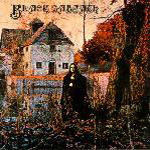 machine-gun
fire at a second-story window. Then, satisfied he has eliminated
the disturbing figure from the cover of Black Sabbath's debut
album, Chuck slips back behind the wheel to continue his cool-cat
joyride. Yep, he's cruising the interzone like a lone wolf,
drive-by style, and mowing down anything that moves. machine-gun
fire at a second-story window. Then, satisfied he has eliminated
the disturbing figure from the cover of Black Sabbath's debut
album, Chuck slips back behind the wheel to continue his cool-cat
joyride. Yep, he's cruising the interzone like a lone wolf,
drive-by style, and mowing down anything that moves.
At this point the audience at the Egyptian breaks into spontaneous
applause. This is Heston's L.A - and he's crossing the border
again, "Touch of Evil"-style, in a scenario 100%
simpatico with the last 30 years of garish, glorious Mexican
TV.
Some have noted that D.P. Russell Metty lowered the frame
rate when he shot Action Charlie whipping out his automatic.
They say the unintentionally goofy results (echoing the Keystone
Cops and Benny Hill) are a "first warning" telegraphing
the film's stylistic deficiencies at large. But let's be fair:
even though Sam Peckinpah had been tinkering with slowing
down violent action, it wasn't until "The Six Million
Dollar Man" hit the air in '73 that it was universally
conceded that slow-motion makes heroic action look ultra-cool
and inhumanly fast and powerful, whereas undercranking just
makes it look cheesy and ridiculous.
There's no time to focus on that, because Heston's self-satisfied
swagger suddenly cracks when he imagines the sound of "phones
ringing" all around him on a deserted downtown corner
carefully decorated with significant debris. Peculiar how
after 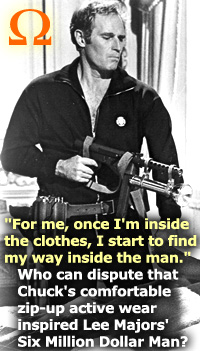 the
Big One, giant piles of loose, unyellowed newspaper toss about
for years on the streets. the
Big One, giant piles of loose, unyellowed newspaper toss about
for years on the streets.
"There is no phone ringing, damn it!" Heston yells
to himself. Got that? He's not only stylish, tough and lightning
quick on the draw, he's also borderline nuts, a character
note that gets abandoned in the picture quickly after he starts
getting laid.
That's when the sight of the sinking sun spurs Heston out
of his panic attack - better get home, the zombies come out
at night! He kicks his persecution complex into gear and pilots
a freshly boosted set of wheels back to his townhouse bunker,
the site of many of the most unforgettably, compellingly ridiculous
scenes of leading man sci-fi narcissism in late-night TV history.
And the action starts no sooner than Heston gets his ride
inside his remote activated garage door. Faster than you can
say, "Man, does that ever look like the back lot at Burbank,"
a crew of hideously pale zombies in black cowling (looking
a hell of a lot like the generic slashers in Wes Craven's
"Scream") attack our planet's Last Jefe Blanco.
After some truly substandard stunt-fighting complete with
the ol' "man on fire" gag, a useful flashback montage
lets us know there's been a terrible plague, and the earth
is toast thanks to the "Sino-Russian War" and its
"bacilli-carrying missiles."
Without today's modern miracle of missile defense, the deadly
virus is of course unleashed into the atmosphere, killing
everybody except 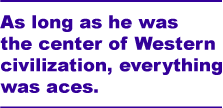 those
lucky few who are turned into a cult of sunlight-allergic
albino acid-casualties. This exposition includes abundant
zoom shots of unbilled actors sitting slack-jawed and gazing
vacantly outward to let us know they've died a sudden, bowel-evacuating
death. Truly the SAG card is a cruel mistress. those
lucky few who are turned into a cult of sunlight-allergic
albino acid-casualties. This exposition includes abundant
zoom shots of unbilled actors sitting slack-jawed and gazing
vacantly outward to let us know they've died a sudden, bowel-evacuating
death. Truly the SAG card is a cruel mistress.
As for Heston, he is U.S. Army scientist Col. Neville, who
manages to inject himself with the only existing dose of experimental
antivirus, then holes up in an urban brownstone to fend off
the mutants who want to kill him because he hasn't renounced
his allegiance to cars and guns. In other words, because he's
the bona fide Charlton Heston in a world gone to hell, damn
it!
Because of their inexplicable Unabomber ideology, the mutants
pester Neville with medieval weapons such as 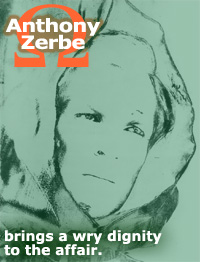 torches
and catapults, while he keeps an arsenal of assault rifles
stacked in his home, just like the real McCoy atop his Mulholland
fortress. Neville believes he's the only normal about, so
he spends his days soliloquizing shirtless to a bust of Caesar,
looting department stores, and losing his grip by imagining
he still has a social life. torches
and catapults, while he keeps an arsenal of assault rifles
stacked in his home, just like the real McCoy atop his Mulholland
fortress. Neville believes he's the only normal about, so
he spends his days soliloquizing shirtless to a bust of Caesar,
looting department stores, and losing his grip by imagining
he still has a social life.
But Neville is not really the last man on Earth at all, just
the Last Man on Earth in a Polyester Jumpsuit. For this fashion
crime, as well as his fealty to Detroit iron - he's a "creature
of the wheel," a line sampled by cartoon-metal monsters
White Zombie - Neville earns the enmity of those white-wash
extras in the druid outfits, an unhappy "Family"
of murderous revolutionaries tastefully cooked up by Warner
Brothers to cash in on the notoriety of the Manson trial in
L.A. only months earlier. With their dark sunglasses, the
Family folks also bring to mind an undead offshoot of the
Blues Brothers.
The counter-assault on Manson Family-values is a one-man
show, until Neville hooks up with a bunch of feral  teenagers,
including a young-turk doctor (Paul Koslo), who idolizes him
and can quote his medical-journal articles verbatim. Tragic
double-crosses ensue - echoes of the feeble-minded disciples of the one true Christ.
Neville fights, loses his Omega Man virginity with a hot downtown
mama, suffers torture, fights, suffers some more, fights some more,
and finally dies a heroic martyr. Roll credits. teenagers,
including a young-turk doctor (Paul Koslo), who idolizes him
and can quote his medical-journal articles verbatim. Tragic
double-crosses ensue - echoes of the feeble-minded disciples of the one true Christ.
Neville fights, loses his Omega Man virginity with a hot downtown
mama, suffers torture, fights, suffers some more, fights some more,
and finally dies a heroic martyr. Roll credits.
"A Warner Brothers-Seven Arts Release, A Kinney Leisure
Service." How's that? Affordable footwear AND heavily
armed, inter-racial, post-apocalyptic wango tango? Bring on
the leisure suit, Buster Brown.
Director Boris Sagal (father of TV's Peg Bundy, Katey Sagal)
helmed episodes of nearly every '60s and '70s TV mystery,
cop, or spy show-including "Naked City," "Peter
Gunn," "The Man From U.N.C.L.E.," "Ironside,"
"Columbo," and "McCloud"-but 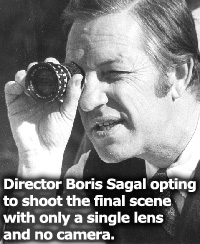 in
spite of his creds from Harvard Law and the Yale Drama School,
he's no C.B. DeMille. Unfortunately, he ain't no Richard Fleischer
or Franklin Schaffner either, two ringers who led Heston's
other, technically excellent sci-fi triumphs. Still, of Sagal's
eight films as director, "The Omega Man" is the
most memorable by far. And for good reason: while attempting
a parable on society's decay, the movie inadvertently mounts
a far more entertaining cautionary tale on the subject
of virulent career rot. in
spite of his creds from Harvard Law and the Yale Drama School,
he's no C.B. DeMille. Unfortunately, he ain't no Richard Fleischer
or Franklin Schaffner either, two ringers who led Heston's
other, technically excellent sci-fi triumphs. Still, of Sagal's
eight films as director, "The Omega Man" is the
most memorable by far. And for good reason: while attempting
a parable on society's decay, the movie inadvertently mounts
a far more entertaining cautionary tale on the subject
of virulent career rot.
As it happens, the real stylist of this film is composer
Ron Grainer, who turns in a score that inadvertently outperforms
the production it supports - from misty and nostalgic motifs
to ear-poppingly psychotronic breakdowns to martyrdom by Gothic
organ, all converging on a rousing main theme of fuzzed-out,
jazzed up Omega Funk. Video nerds will surely hail the Grainer
touch on loan from those time-travellers and paranoics of
British television, "Doctor Who" and "The Prisoner."
The script is based on the 1954 sci-fi novel I Am Legend,
by "Twilight Zone" all-star Richard Matheson, but
skips its source's dimestore philosophizing in favor of some
wonderfully performed deadpan rants from Anthony Zerbe as
evil smoothie Matthias.
"One creature, caught. Caught in a place he cannot stir
from in the dark, 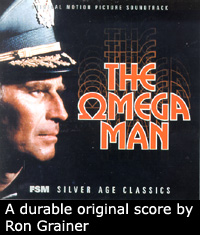 alone,
outnumbered hundreds to one - nothing to live for but his
memories, nothing to live with but his gadgets, his cars,
his guns, his gimmicks." Never mind Neville on his balcony
with the infra-red scope, it's the villain who's eerily on
target in this picture. alone,
outnumbered hundreds to one - nothing to live for but his
memories, nothing to live with but his gadgets, his cars,
his guns, his gimmicks." Never mind Neville on his balcony
with the infra-red scope, it's the villain who's eerily on
target in this picture.
Then there's Zerbe's angry-brother henchman Zachary, a role
that earned Lincoln Kilpatrick a well-deserved studio paycheck.
Yet Kilpatrick's Panther-black rhetoric about Neville's "honky
paradise" earns him only a rebuke from the Number One
Bad Man. "Forget the old ways," purrs Matthias,
who also appears in flashbacks as a sleazy TV network news
anchor.
Yes, it's true, the film poses the eternal question of classical
philosophy: what would happen if Peter Jennings were the victim
of a "bacilli-carrying missile"? The correct answer
is that the beloved anchorman would mutate into a charismatic
fascist, using his oratory talents to cast a spell on his
fellow mutants, about half of whom happen to be black. This
is not to speculate that the film's makeup team was part of
a conspiracy to humiliate young black actors by dousing them
in what appears to be pastry flour.
For his part, when he's not gunning down extras or sweating
over his test tubes, Neville leads the fantasy life of a swinging
Flower-Power bachelor: rocketing a sports car through the
showroom window,  cranking
up the hi-fi at his pad, kicking back at the picture palace
to ape utopian dialogue from the "Woodstock" concert
movie, shoplifting from the department store, and shagging
the one available woman on the planet, who - perhaps dreading
this dramatic necessity - disguises herself as a store mannequin
to avoid being spotted. cranking
up the hi-fi at his pad, kicking back at the picture palace
to ape utopian dialogue from the "Woodstock" concert
movie, shoplifting from the department store, and shagging
the one available woman on the planet, who - perhaps dreading
this dramatic necessity - disguises herself as a store mannequin
to avoid being spotted.
What kind of a film have we found ourselves in, when the
acid-nightmare vision of Heston solo quoting Woodstock's trippy-hippy
dialogue ("What kind of world is it where you have to
be afraid to smile at someone?") is merely a prelude
to his stilted romance with Afro-sporting superfox Rosalind
Cash? We'll let her answer that question for herself- as she
famously quipped on the set: "It's a spooky feeling to
screw Moses."
And so it came to pass, in tangling with Cash, Heston joined
the fraternity of leading man squares who bed down black chicks
to demonstrate how "with it" they are - Eastwood notched
the mahogany headboard in '75 with "The Eiger Sanction,"
while William Shatner led the brigade with his breakthrough
kiss of Nichelle Nichols on "Star Trek" several
years earlier (bigots in TV Land could take comfort - the
captain and communications officer were compelled to make
out by perverted aliens). Bear in mind all three gringos lagged
behind Richard Roundtree's almighty
John Shaft in the love-master 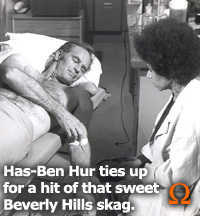 department,
but Chuck still maintains bragging rights thanks to catapulting
his virility beyond all racial and ethnic boundaries and into
untested species, namely his unparalleled lip-lock with Kim
Hunter in ape-face, which was basically Moses quitting God's
team to get it on in the name of Darwin. department,
but Chuck still maintains bragging rights thanks to catapulting
his virility beyond all racial and ethnic boundaries and into
untested species, namely his unparalleled lip-lock with Kim
Hunter in ape-face, which was basically Moses quitting God's
team to get it on in the name of Darwin.
Meanwhile back in Omega-land, try to keep a straight face
as Heston jogs into view doused in stage sweat and sporting
a K-mart tracksuit, staggers to a halt, checks his watch,
and claims that he's just run a 3-minute, 50-second mile.
This observer will accept the existence of a mutant plague
and a race of fascist Black Sabbath humanoids led by Anthony
Zerbe, but Chuck Heston running the world record in the mile?
Surely a guaranteed spit-take for any American of sound mind
over the age of four.
It's a small complaint, especially since the film's action
scenes make it clear that while Heston's character appears
in nearly every shot, the actor himself is often nowhere to
be seen. Instead, in every sequence of stunt driving or hand-to-hand
combat, Heston is replaced by a stunt double who could possibly
pass for Lee Majors, but only if the camera were moved back
about 30 feet.
At the breaking point of the laws of continuity, Heston and
Cash rush headlong from the living dead into the "motorcycle
chase sequence" - he sports a safari jacket, and she rides
behind him on the bike, wearing a brown-leather jumpsuit,
arms wrapped around his waist. By rights this should be a
pulse-poundingly emblematic Omega moment. But for a long series
of cuts, the talent retire to their trailers, replaced by
a distinctly non-Heston stunt cyclist in a safari jacket,
carrying a leather-clad dummy topped by an Afro wig strapped
to his back. Truly there is no end to the indignities of this
depopulated society.
Finally, who could doubt but that it was Heston himself who
suggested the film's closing image? After saving the planet
by synthesizing the antidote  from
his own life-giving super-blood, Neville - speared to death
by the godless ingrate hippy metal-heads - falls dead into
a park fountain in a Jesus Christ-pose. The post-production
crew thoughtfully solarizes this shot after a final freeze
frame, driving home the point for those unbelievers who may've
dozed off into their popcorn. from
his own life-giving super-blood, Neville - speared to death
by the godless ingrate hippy metal-heads - falls dead into
a park fountain in a Jesus Christ-pose. The post-production
crew thoughtfully solarizes this shot after a final freeze
frame, driving home the point for those unbelievers who may've
dozed off into their popcorn.
Perennial American Cinematheque tribute-fiend Heston beat
his usual sycophants to the punch when the Egyptian screened
the film in 2000, grabbing the mic to announce: "I think
the crucifixion imagery at the end of this film is just marvelous,
don't you?" Cue the warm applause for one of the most
flagrantly self-righteous resolutions in Heston movie history.
When one viewer inquired about the significance of the Heston
sci-fi paranoid style, the response was typically modest:
"I hesitate to say I saved the world, but I can handle
it if you can." Laughter, warm applause and, from at
least one salaryman of the Five-O bullpen, dueling rolled
eyeballs.
Still, to give Moses Ben-Hur Taylor his due, with Apes,
Omega and Soylent Green, a single actor had interlocked the
Holy Trinity of the prophetic sci-fi actioner. Unfortunately
this makes him the patron saint of revolting hackwork like
"Stargate" and "Battlefield Earth," a
crime for which he should rightfully hang. But his brazen
appeals to pop spirituality qualify him instead for cinematic
beatification. What other actor would dare? And - honestly
- what other actor could put it over? John Travolta's failure
to sport a toga in a single one of his film appearances disqualifies
him from consideration.
 Is
Charlton Heston God? Not exactly, but like his fellow Hollywood
holograms Ronald Reagan and John Wayne, he is an incarnation
of the American Era, its dogmas and appetites. Is
Charlton Heston God? Not exactly, but like his fellow Hollywood
holograms Ronald Reagan and John Wayne, he is an incarnation
of the American Era, its dogmas and appetites.
This much we do know. Heston is a charmer and a stand-up
guy, a doting father and faithful husband, a guy obsessed
with his Scottish blood pride, and a macho workhorse whose
autobiography "In The Arena" also reveals a bit
of a stage queen and mama's boy. Like Brando, he values the
Bard of Avon above all others. "Hollywood's best imitation
Jew" (by William Wyler's measure) counts Olivier, Orson
Welles and Vanessa Redgrave among his friends and well-wishers.
A capable actor, he may fall short of Kirk Douglas as Ultimate
Cinema Champion and Paul Newman as a Humanist. But his leap
of faith from the Golden Age of the Hollywood epic to the
outer limits of dystopian science fiction makes Mr. DeMille's
Chosen One a marvel in his own right.
When all is said and done, truly Charlton Heston, The Omega
Man, can be counted as a Founding Father of the Psychotronic
Hall of Fame.
|






























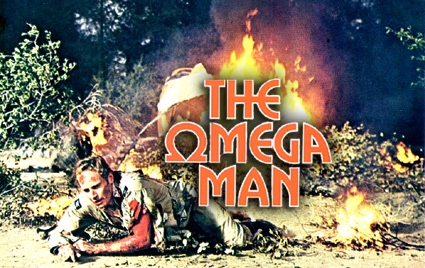
 that
countless pretenders have labored in vain
that
countless pretenders have labored in vain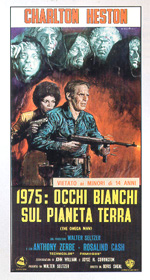 hot
cave chick? Check. Taking the fight to real-life bad-ass Ice-T
in the Time Warner boardroom? Double-check. Getting suckered
into a discrediting interview with lefty big game hunter Michael
Moore in "Bowling For Columbine"? Check -- and this
time counter-check, Imperator.
hot
cave chick? Check. Taking the fight to real-life bad-ass Ice-T
in the Time Warner boardroom? Double-check. Getting suckered
into a discrediting interview with lefty big game hunter Michael
Moore in "Bowling For Columbine"? Check -- and this
time counter-check, Imperator. Earth."
Not bad for starters, but the master producer/ director envisioned
his new protégé in a more ambitious role, especially
for a 30 year-old from the north Michigan woods. DeMille was
talking about Mr. Pentateuch himself, Old Moses, Moses the
Prophet, Moses the Lawgiver, Moses the man who said: "Now
kill every male dependent, and kill every woman who has had
intercourse with a man, but spare for yourselves every woman
among them who has not had intercourse." And things like
that.
Earth."
Not bad for starters, but the master producer/ director envisioned
his new protégé in a more ambitious role, especially
for a 30 year-old from the north Michigan woods. DeMille was
talking about Mr. Pentateuch himself, Old Moses, Moses the
Prophet, Moses the Lawgiver, Moses the man who said: "Now
kill every male dependent, and kill every woman who has had
intercourse with a man, but spare for yourselves every woman
among them who has not had intercourse." And things like
that.  warp
of the '60s was enough to give the old guard a serious case
of whiplash. Nostalgia for the imperial glory days of the
'50s ran high, yet a guy like Heston was at the same time
eager to show he was plenty "with it" enough to
make the scene in these free-wheeling new times of rebellion
and unfettered sexuality.
warp
of the '60s was enough to give the old guard a serious case
of whiplash. Nostalgia for the imperial glory days of the
'50s ran high, yet a guy like Heston was at the same time
eager to show he was plenty "with it" enough to
make the scene in these free-wheeling new times of rebellion
and unfettered sexuality.  the
now-classic "Heston nukes the world" gag. With his usual appetite
for over-doing things, Mr. DeMille's Technicolor prophet had
metastasized into the ultimate suicide bomber. So how does
a leading ham of middle age with a penchant for apocalyptic
over-kill follow up a stunt like that one?
the
now-classic "Heston nukes the world" gag. With his usual appetite
for over-doing things, Mr. DeMille's Technicolor prophet had
metastasized into the ultimate suicide bomber. So how does
a leading ham of middle age with a penchant for apocalyptic
over-kill follow up a stunt like that one? machine-gun
fire at a second-story window. Then, satisfied he has eliminated
the disturbing figure from the cover of Black Sabbath's debut
album, Chuck slips back behind the wheel to continue his cool-cat
joyride. Yep, he's cruising the interzone like a lone wolf,
drive-by style, and mowing down anything that moves.
machine-gun
fire at a second-story window. Then, satisfied he has eliminated
the disturbing figure from the cover of Black Sabbath's debut
album, Chuck slips back behind the wheel to continue his cool-cat
joyride. Yep, he's cruising the interzone like a lone wolf,
drive-by style, and mowing down anything that moves.  the
Big One, giant piles of loose, unyellowed newspaper toss about
for years on the streets.
the
Big One, giant piles of loose, unyellowed newspaper toss about
for years on the streets.  those
lucky few who are turned into a cult of sunlight-allergic
albino acid-casualties. This exposition includes abundant
zoom shots of unbilled actors sitting slack-jawed and gazing
vacantly outward to let us know they've died a sudden, bowel-evacuating
death. Truly the SAG card is a cruel mistress.
those
lucky few who are turned into a cult of sunlight-allergic
albino acid-casualties. This exposition includes abundant
zoom shots of unbilled actors sitting slack-jawed and gazing
vacantly outward to let us know they've died a sudden, bowel-evacuating
death. Truly the SAG card is a cruel mistress. torches
and catapults, while he keeps an arsenal of assault rifles
stacked in his home, just like the real McCoy atop his Mulholland
fortress. Neville believes he's the only normal about, so
he spends his days soliloquizing shirtless to a bust of Caesar,
looting department stores, and losing his grip by imagining
he still has a social life.
torches
and catapults, while he keeps an arsenal of assault rifles
stacked in his home, just like the real McCoy atop his Mulholland
fortress. Neville believes he's the only normal about, so
he spends his days soliloquizing shirtless to a bust of Caesar,
looting department stores, and losing his grip by imagining
he still has a social life.  teenagers,
including a young-turk doctor (Paul Koslo), who idolizes him
and can quote his medical-journal articles verbatim. Tragic
double-crosses ensue - echoes of the feeble-minded disciples of the one true Christ.
Neville fights, loses his Omega Man virginity with a hot downtown
mama, suffers torture, fights, suffers some more, fights some more,
and finally dies a heroic martyr. Roll credits.
teenagers,
including a young-turk doctor (Paul Koslo), who idolizes him
and can quote his medical-journal articles verbatim. Tragic
double-crosses ensue - echoes of the feeble-minded disciples of the one true Christ.
Neville fights, loses his Omega Man virginity with a hot downtown
mama, suffers torture, fights, suffers some more, fights some more,
and finally dies a heroic martyr. Roll credits.  in
spite of his creds from Harvard Law and the Yale Drama School,
he's no C.B. DeMille. Unfortunately, he ain't no Richard Fleischer
or Franklin Schaffner either, two ringers who led Heston's
other, technically excellent sci-fi triumphs. Still, of Sagal's
eight films as director, "The Omega Man" is the
most memorable by far. And for good reason: while attempting
a parable on society's decay, the movie inadvertently mounts
a far more entertaining cautionary tale on the subject
of virulent career rot.
in
spite of his creds from Harvard Law and the Yale Drama School,
he's no C.B. DeMille. Unfortunately, he ain't no Richard Fleischer
or Franklin Schaffner either, two ringers who led Heston's
other, technically excellent sci-fi triumphs. Still, of Sagal's
eight films as director, "The Omega Man" is the
most memorable by far. And for good reason: while attempting
a parable on society's decay, the movie inadvertently mounts
a far more entertaining cautionary tale on the subject
of virulent career rot.  alone,
outnumbered hundreds to one - nothing to live for but his
memories, nothing to live with but his gadgets, his cars,
his guns, his gimmicks." Never mind Neville on his balcony
with the infra-red scope, it's the villain who's eerily on
target in this picture.
alone,
outnumbered hundreds to one - nothing to live for but his
memories, nothing to live with but his gadgets, his cars,
his guns, his gimmicks." Never mind Neville on his balcony
with the infra-red scope, it's the villain who's eerily on
target in this picture. cranking
up the hi-fi at his pad, kicking back at the picture palace
to ape utopian dialogue from the "Woodstock" concert
movie, shoplifting from the department store, and shagging
the one available woman on the planet, who - perhaps dreading
this dramatic necessity - disguises herself as a store mannequin
to avoid being spotted.
cranking
up the hi-fi at his pad, kicking back at the picture palace
to ape utopian dialogue from the "Woodstock" concert
movie, shoplifting from the department store, and shagging
the one available woman on the planet, who - perhaps dreading
this dramatic necessity - disguises herself as a store mannequin
to avoid being spotted.  department,
but Chuck still maintains bragging rights thanks to catapulting
his virility beyond all racial and ethnic boundaries and into
untested species, namely his unparalleled lip-lock with Kim
Hunter in ape-face, which was basically Moses quitting God's
team to get it on in the name of Darwin.
department,
but Chuck still maintains bragging rights thanks to catapulting
his virility beyond all racial and ethnic boundaries and into
untested species, namely his unparalleled lip-lock with Kim
Hunter in ape-face, which was basically Moses quitting God's
team to get it on in the name of Darwin.  from
his own life-giving super-blood, Neville - speared to death
by the godless ingrate hippy metal-heads - falls dead into
a park fountain in a Jesus Christ-pose. The post-production
crew thoughtfully solarizes this shot after a final freeze
frame, driving home the point for those unbelievers who may've
dozed off into their popcorn.
from
his own life-giving super-blood, Neville - speared to death
by the godless ingrate hippy metal-heads - falls dead into
a park fountain in a Jesus Christ-pose. The post-production
crew thoughtfully solarizes this shot after a final freeze
frame, driving home the point for those unbelievers who may've
dozed off into their popcorn.  Is
Charlton Heston God? Not exactly, but like his fellow Hollywood
holograms Ronald Reagan and John Wayne, he is an incarnation
of the American Era, its dogmas and appetites.
Is
Charlton Heston God? Not exactly, but like his fellow Hollywood
holograms Ronald Reagan and John Wayne, he is an incarnation
of the American Era, its dogmas and appetites. 